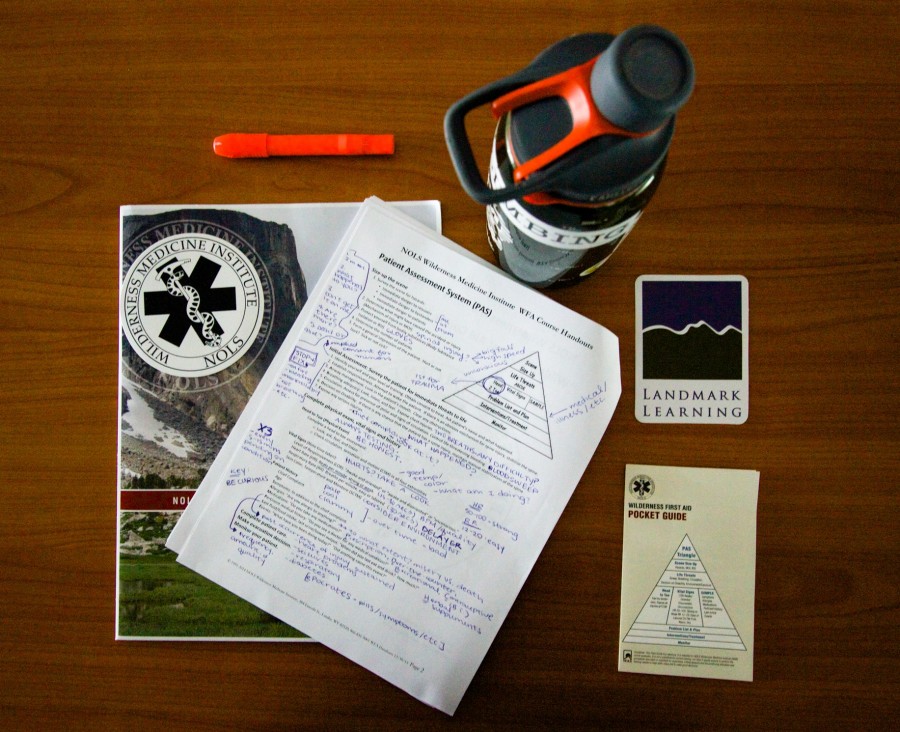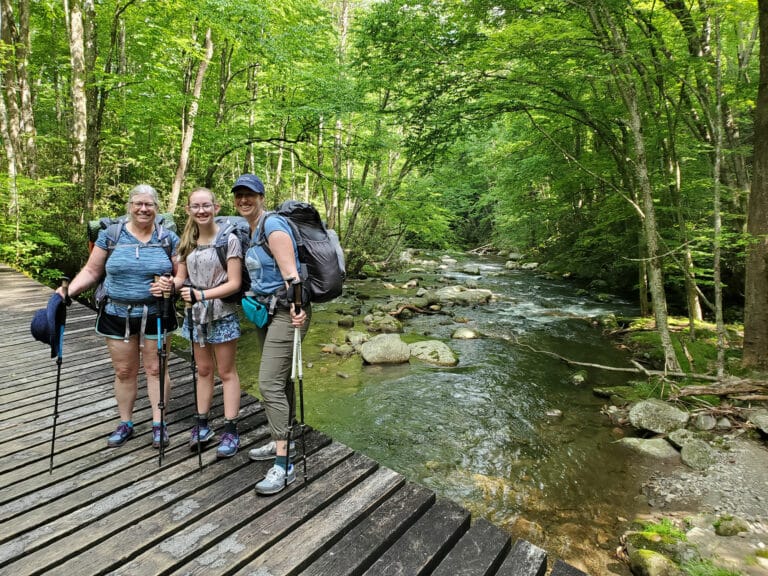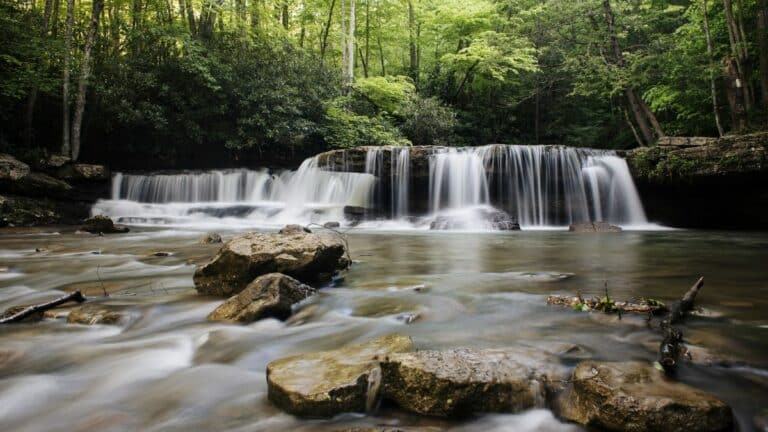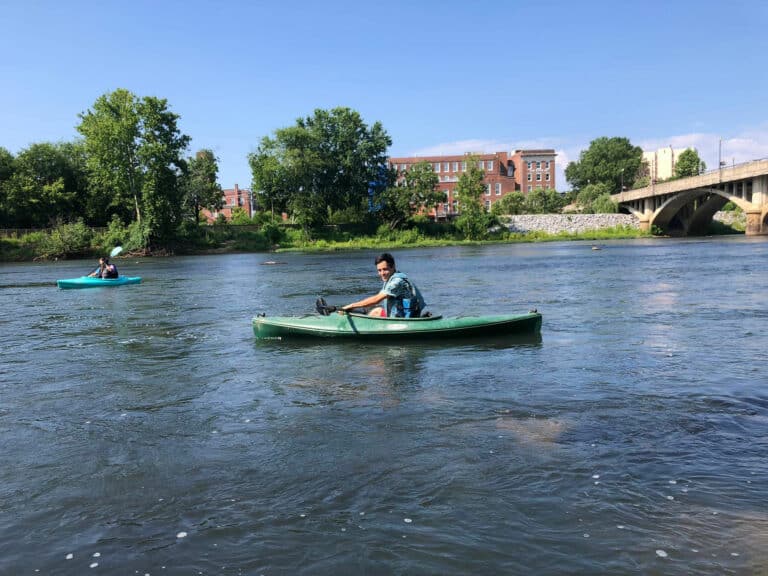“Why don’t we all start off with a little introduction,” says Jason, our Wilderness First Aid (WFA) instructor from Landmark Learning.
It was 8am on a Saturday morning and for the first time in over a year, I was back in school. Literally.
Last weekend, my alma mater, Emory & Henry College, served as host for a WFA course through Landmark Learning’s Wilderness Medicine Institute. I was back in my old stomping grounds, the college’s outdoor program building, the very place where I first tied a figure eight knot and learned about Leave No Trace.
There was the same whiteboard in front of me, the same canoes cinched in the rafters above, the same wall stacked with boats and backpacks and climbing gear. I remember spending long nights at that building. It was our home away from home, the place we went to when we needed a quiet place to study but, more often than not, found ourselves distracted by the bouldering cave and the Sublime tunes we blasted over the speaker system. Ah, those were the days.
The last time I took a WFA course, I was deep in the jungles of the Amazon on my NOLS semester abroad. At the time, it didn’t just seem appropriate that I was learning about wilderness first aid – it was downright necessary. That was back in 2011 though, and I’d since let my two-year certification expire, thinking, “I’m not going to be a guide or an instructor. I don’t need it.”
But when my mentor and former outdoor program director Jim told me the college was hosting the course, I decided it would be worth my while to get a refresher. After all, I certainly hadn’t stopped recreating in the outdoors. In fact, my job required it. While I hadn’t needed to use any of my first aid skills in the past couple of years, it was only a matter of time.
Ironically, that time came just two days prior to my WFA course. A few friends of mine in Asheville decided to show me around the singletrack at Bent Creek so I could christen my Violet on the local N.C. trails. As we were charging through one of the last downhill sections of our ride, one of my friends hit the front brake just a little too hard and sent herself OTB x 2.
She landed, shoulder first, on a raised root system, shielding her face as the bike came crashing after her. It happened so fast, and her wipeout was so graceful, that at first I wasn’t sure if she would bounce right back up laughing or if she would continue to lay there in the fetal position, crumpled in a ball of hurt.
Of course, it was the latter that ensued. My friends and I immediately sprung into action, asking about her head, her back, what hurt most, could she move at all, did anything feel broken? We kept her on her side while the initial shock of the wipeout wore off. We exposed her shoulder, assessing the already red and swollen lump and concluding that it likely wasn’t broken, but that she definitely was not riding out.
Surprisingly, we all kicked into gear like a well-oiled machine. One of the guys hopped on his bike and rode the remaining few miles out to grab a truck while the rest of us split up other duties like carrying her pack, walking her bike, and helping her get comfortable enough to hike out. I fashioned a sling for her out of my Deuter day pack and we proceeded to walk in the fading daylight toward the gravel road. Fortunately, a kind couple picked her up shortly afterward and she’s on the mend as we speak.
“My name’s Manda, and I’ve never done anything like this before, but I figure it’s a good thing to know,” says a woman off to my right.
We’d finally made it through all of the introductions. From zoologists to Boy Scout troop leaders, swimming coaches, and search and rescue volunteers, it was amazing how different the 14 people in the room were. Educators, students, working professionals from every background, some who were seasoned outdoorsmen and others who openly admitted to being “lab rats.”
“Now, imagine you are mountain biking in DuPont State Forest and your buddy has a really bad wreck,” Jason says, setting the stage for our first scenario post-introductions. “What do you do?”
For the next two days, Jason answered that question. What do you do when you’re in the wilderness and you or someone else gets injured? He talked us through the basics of backcountry medicine, how to size up the scene of an accident, perform a comprehensive patient assessment, formulate a treatment and, if needed, an evacuation plan. We even learned how to execute basic short-term treatments for everything from hypothermia to dislocated shoulders and full thickness burns.
Sure, there’s a pretty low likelihood of any of us on the East encountering someone suffering from altitude sickness or a life-threatening amputation, but knowing even the basics could be the difference between life and death. Sometimes I catch myself getting sucked into invincibility mode, that dangerous point where your skills and your adventures start to plateau and, after so many incident-free outings, you begin to get complacent. That’s never a good place to be and I’m always quick to be humbled, but especially after the Bent Creek incident and the WFA wake-up call, I realized just how quickly things can turn bad when you’re a few hours from hospitals and reliable cell reception.
“The number one thing you can do to help yourself is prevention,” Jason says on our final day of training. “If you can prevent an accident from happening, you’ll never have to deal with the repercussions.”
I couldn’t agree more, and I encourage everyone to get a little basic first aid training regardless of their level of outdoor activity. I’d say if it doesn’t personally make you feel better about going out in the woods alone, it’ll surely make your climbing partners and paddling buddies feel a little safer knowing someone in the group can lend a hand in a time of need.
Have you had any close calls in the woods? Ever needed to call upon your first aid skills in the wilderness? Let’s hear some stories!











